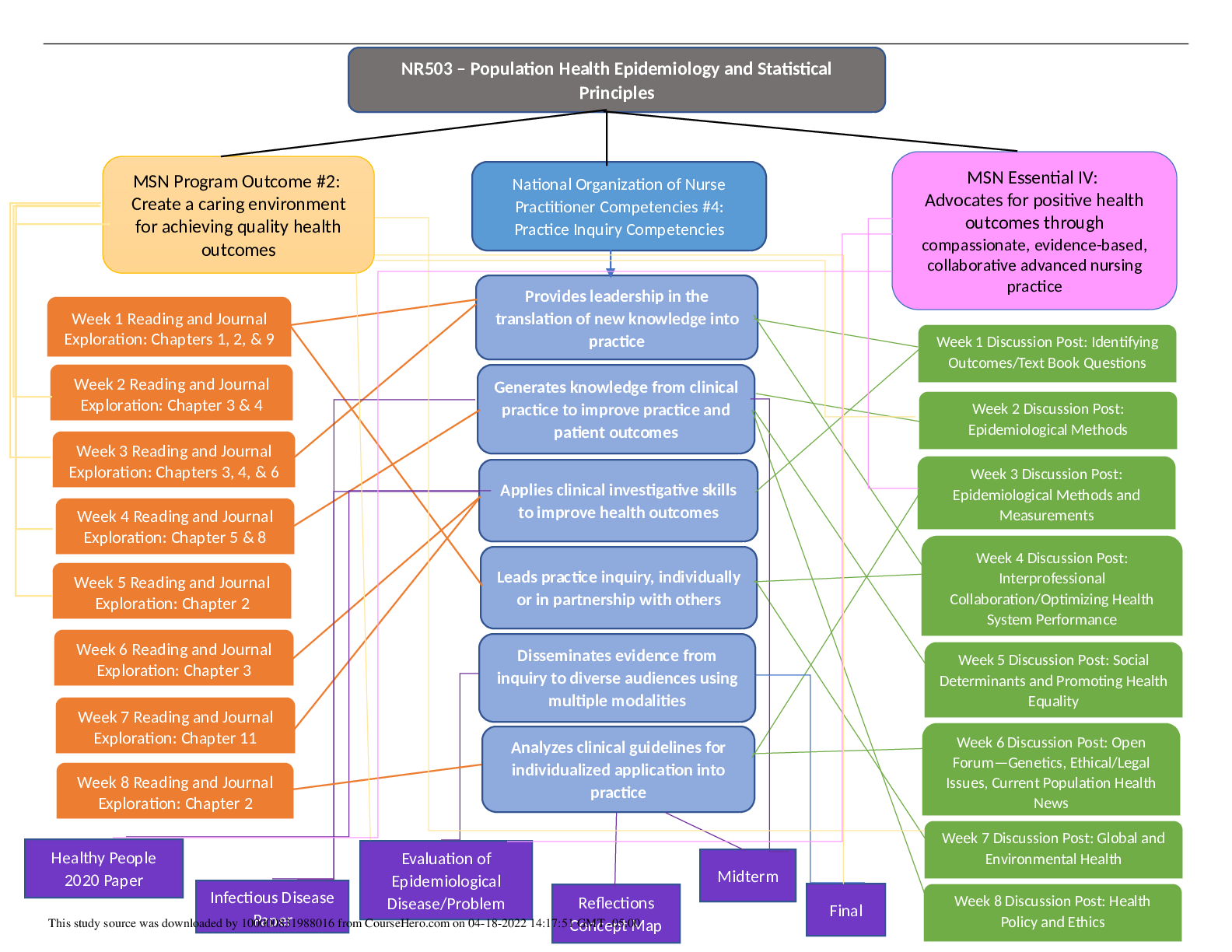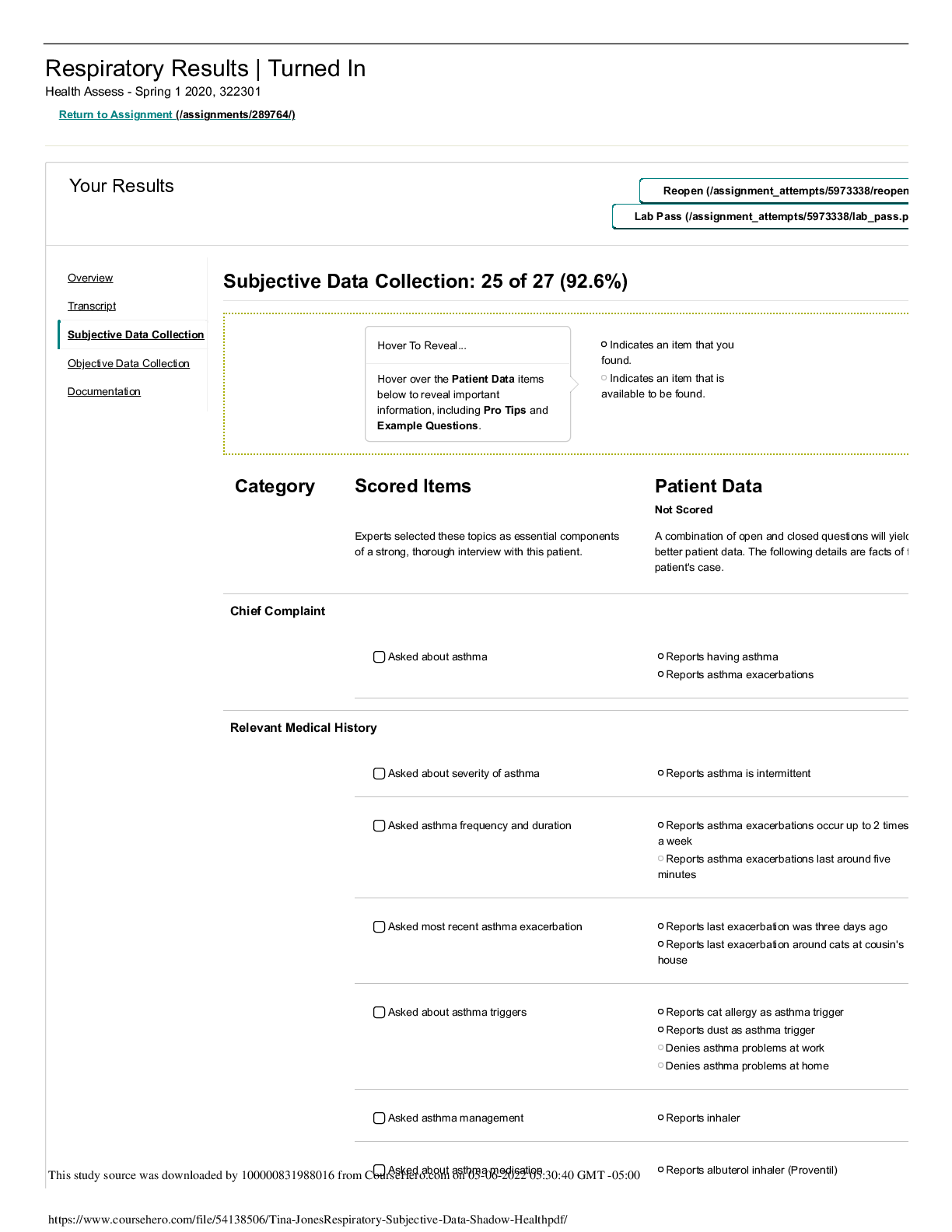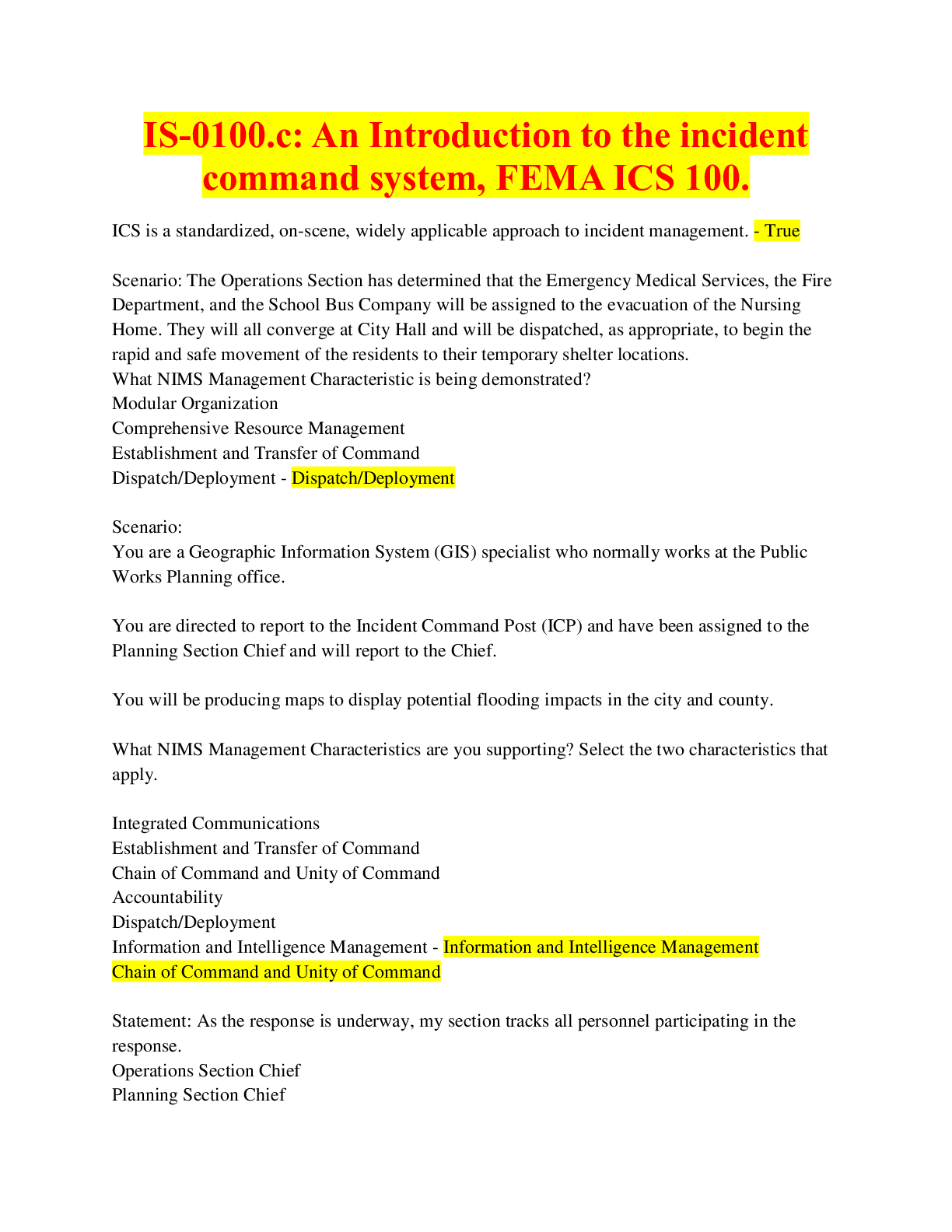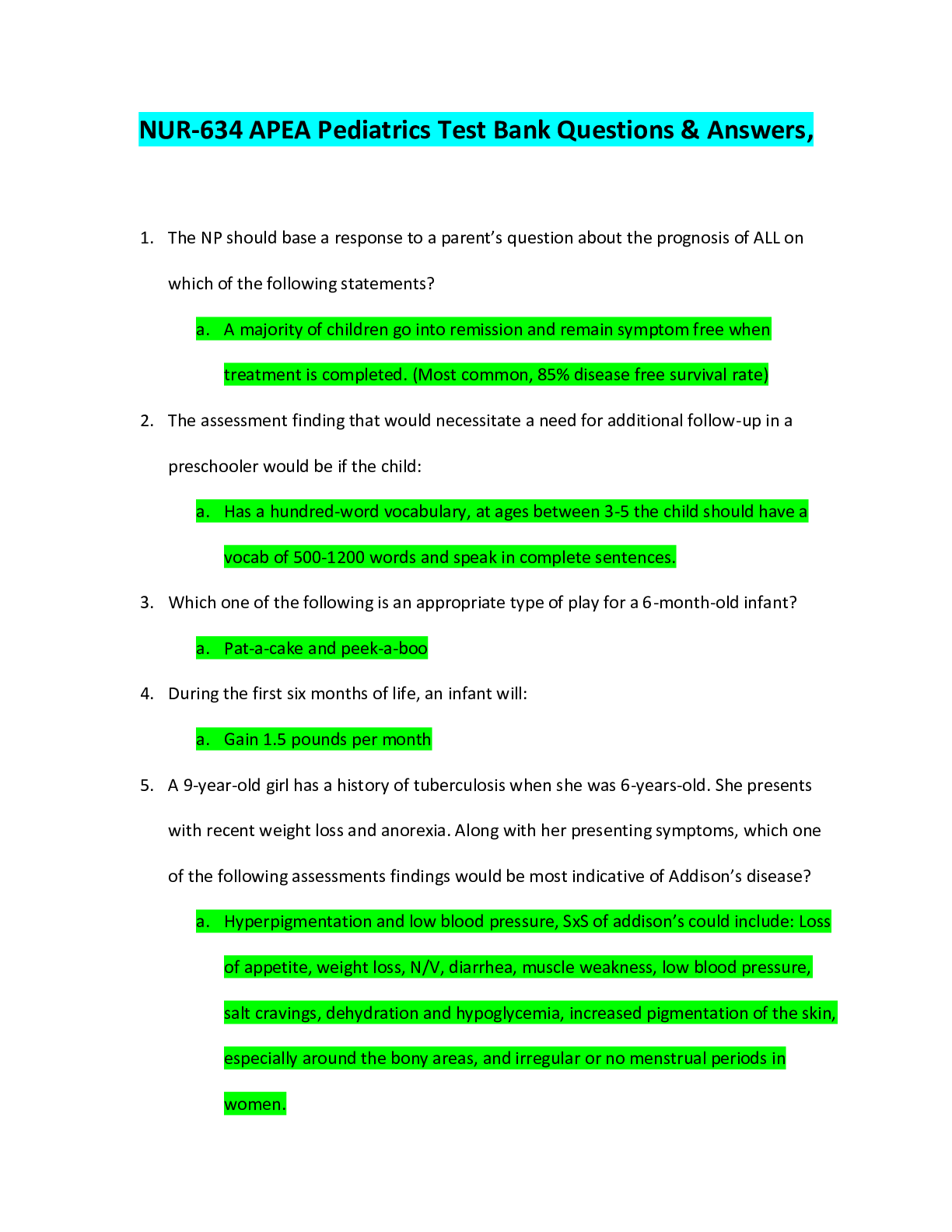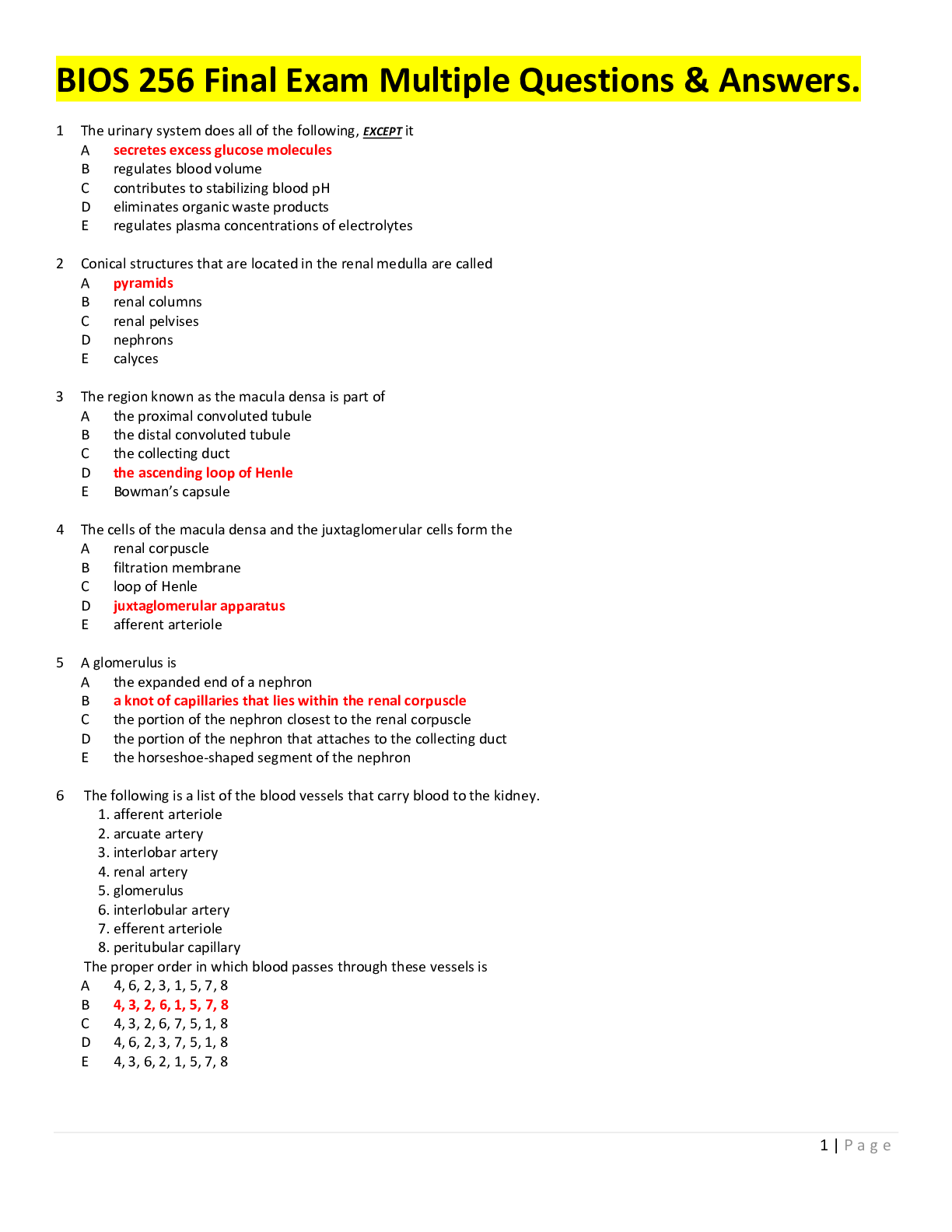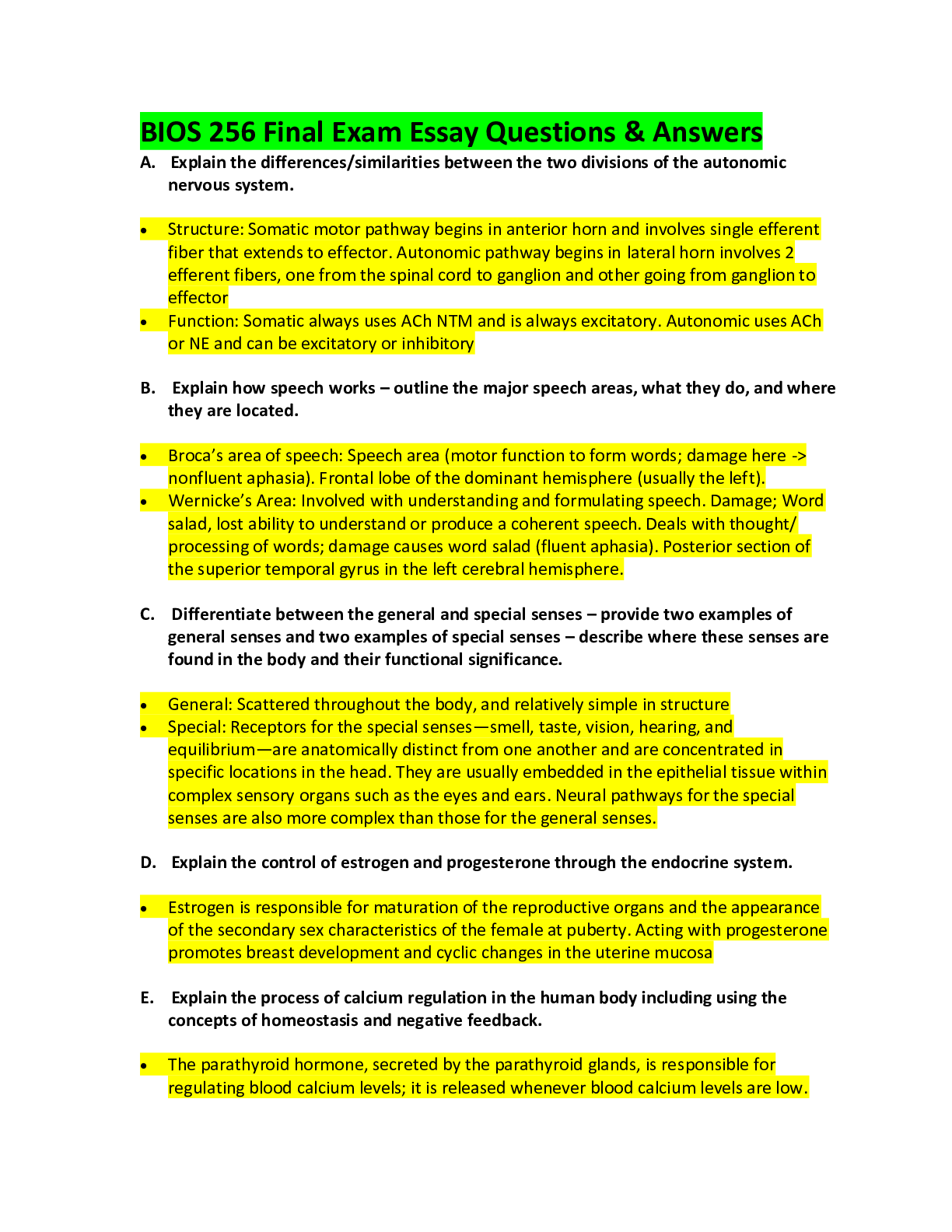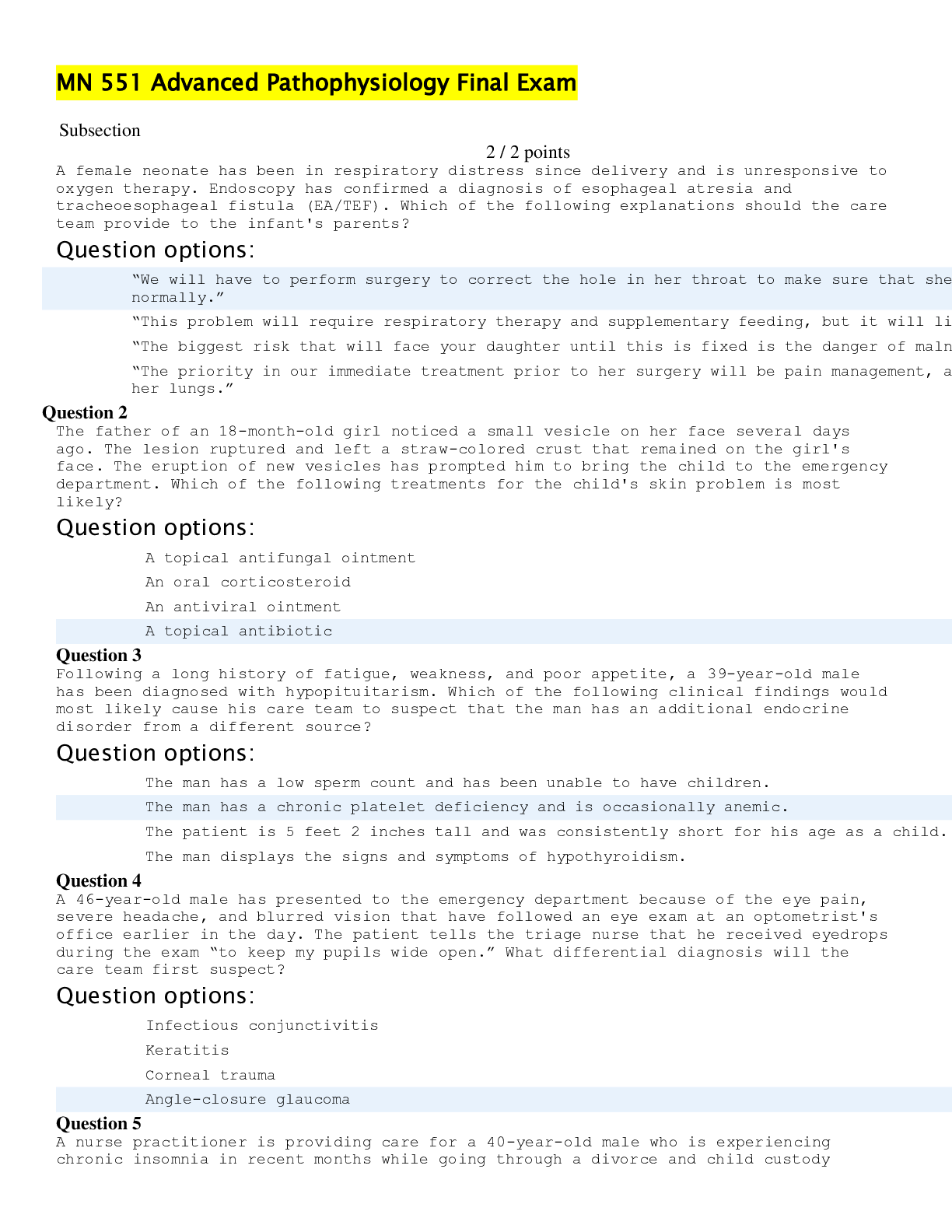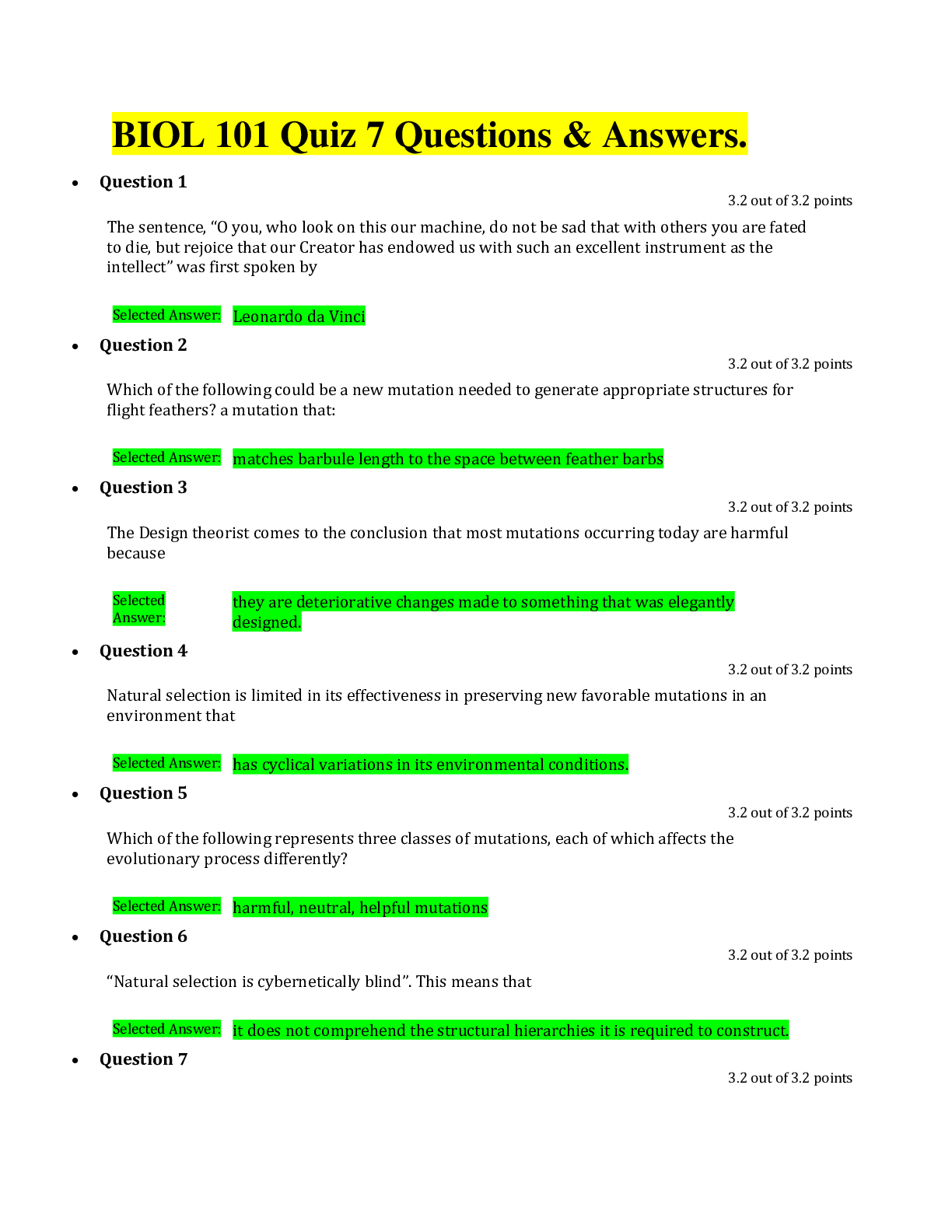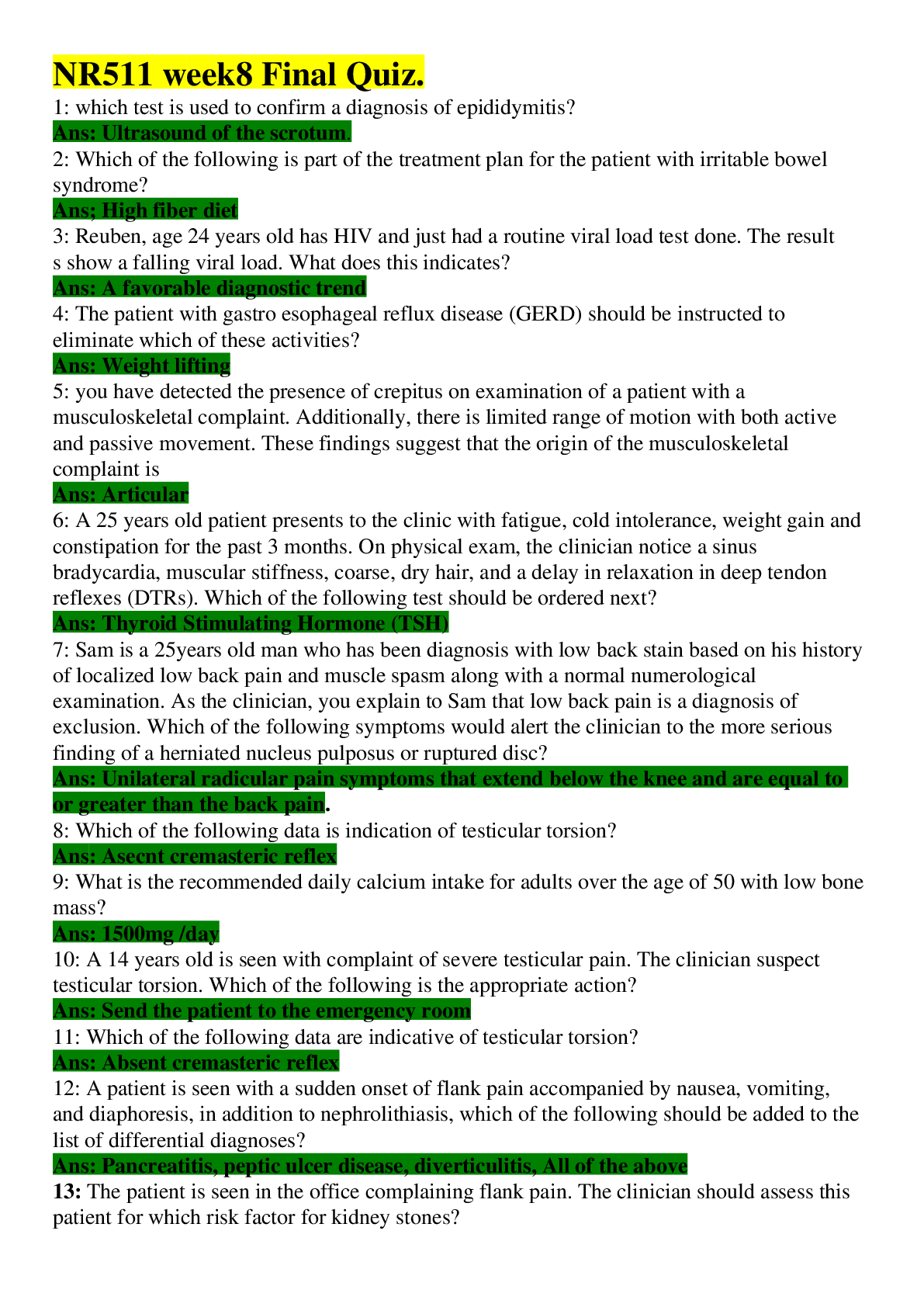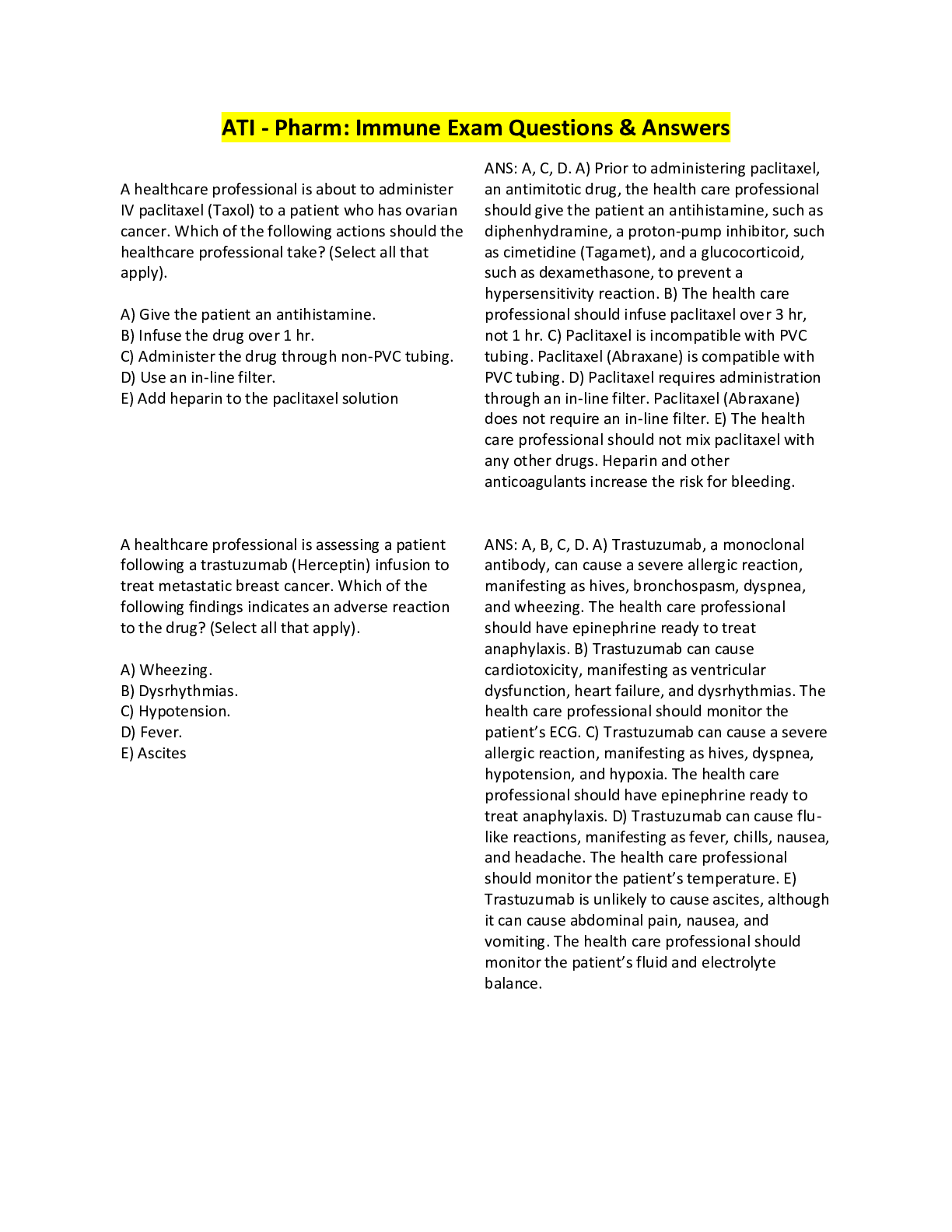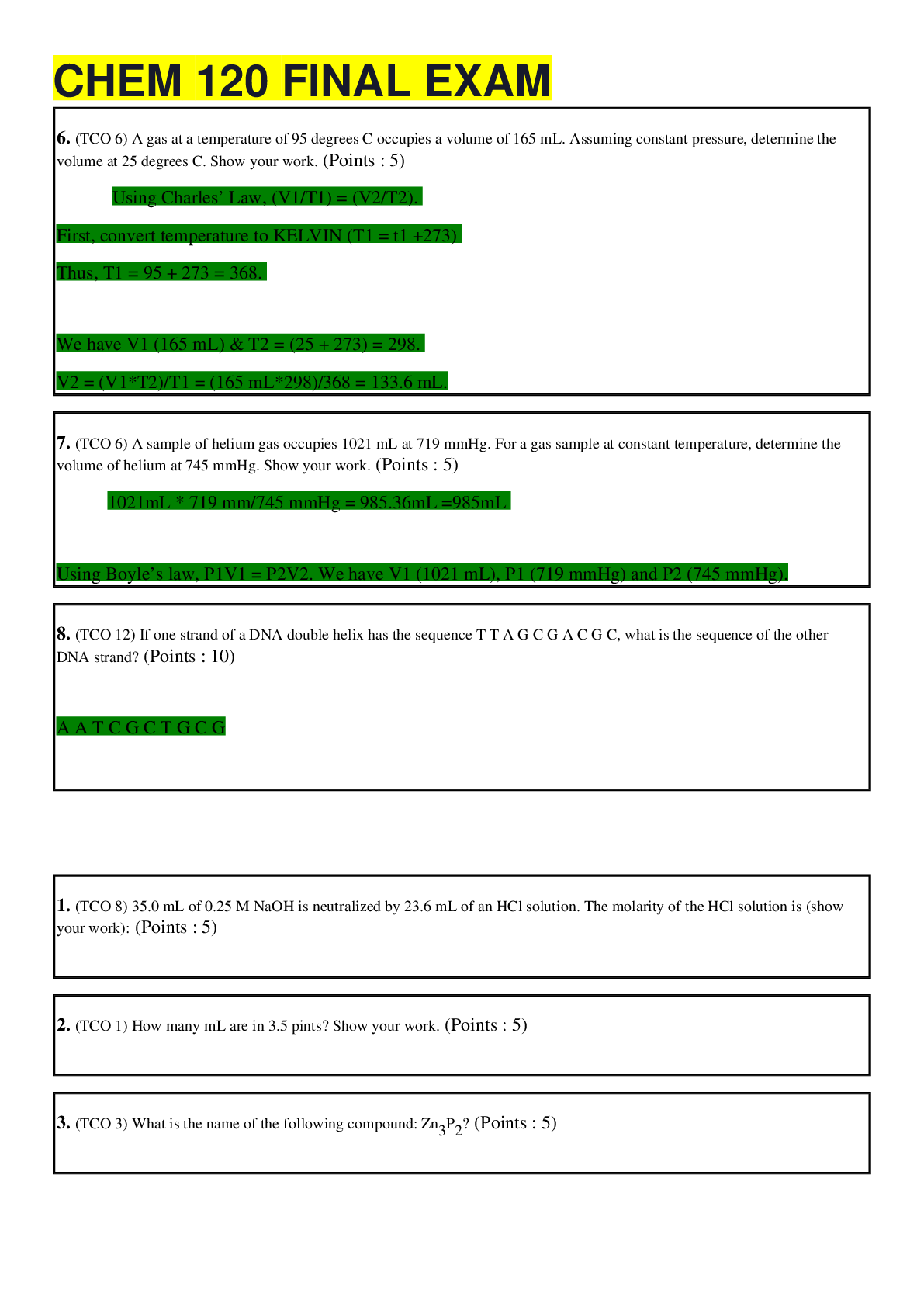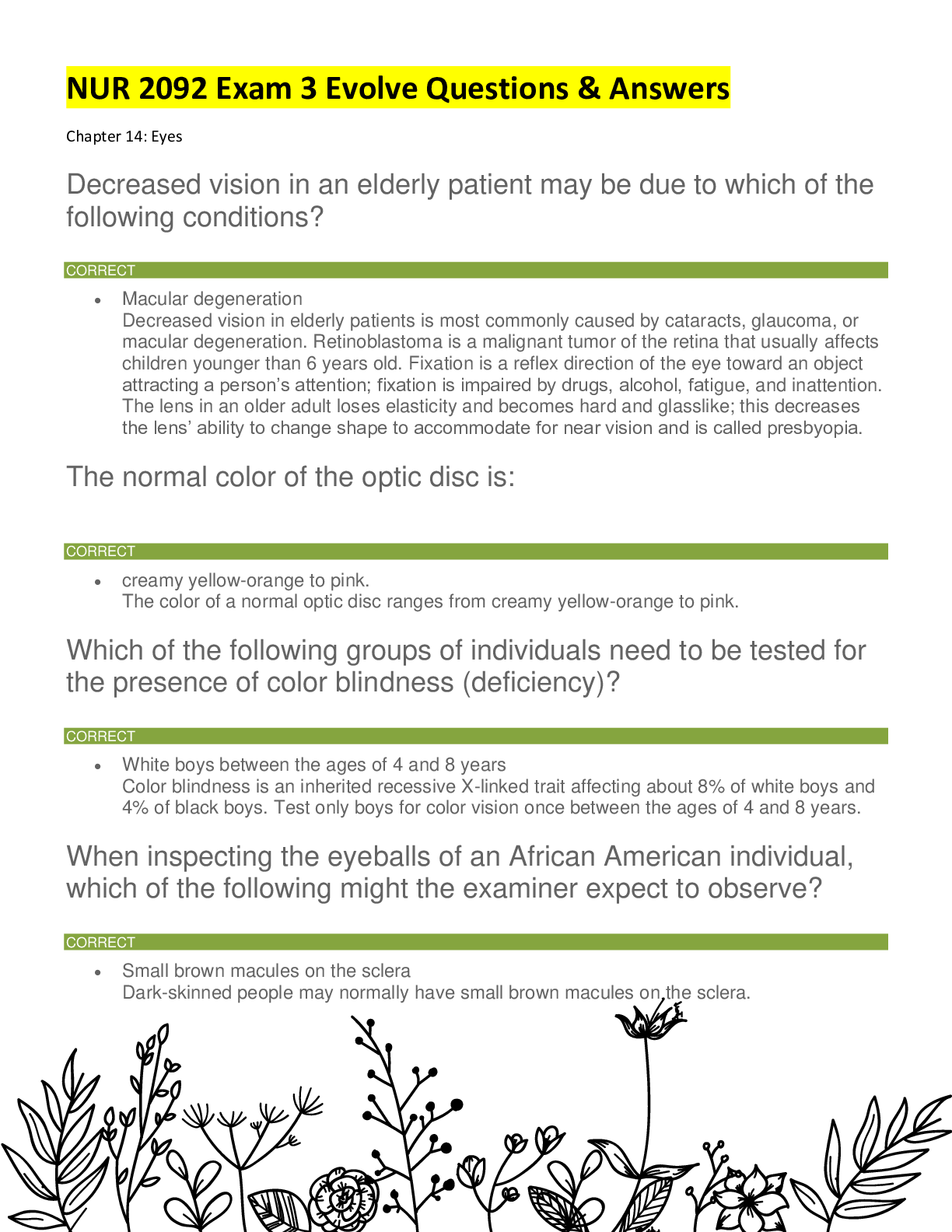NUR 141 Pharma Test 3, Questions & Answers, Explained With Rationales
Document Content and Description Below
NUR 141 Pharma Test 3, Questions & Answers, Explained With Rationales-A patient is taking nonsteroidal anti-inflammatory agents for arthritis of the knees and hips. Which of the following diseases is ... a result of cellular destruction of the gastrointestinal tract from this medication? A) Esophageal cancer B) Bowel obstruction C) Liver cancer D) Peptic ulcer disease - D) Peptic ulcer disease Rationale: Cell destruction will occur from the ingestion of NSAIDs, which can lead to the development of peptic ulcer disease. Nonsteroidal anti-inflammatory agents do not cause esophageal cancer, bowel obstruction, or liver cancer. A patient has Maalox ordered for administration as needed. Which of the following conditions contraindicates the administration of Maalox? A) Hypertension B) Heart rate of 68 C) Renal dysfunction D) Stress ulcer - C) Renal dysfunction Rationale: Magnesium-based antacids are contraindicated in patients with renal failure. Magnesium-based antacids are not contraindicated with hypertension, regular heart rate, or stress ulcer. A patient is diagnosed with peptic ulcer disease complicated by H. pylori. What is the rationale for adding bismuth to the patient's medication regimen? A) Increases pepsin activity B) Decreases gastrin secretion C) Prevents metabolic alkalosis D) Protects gastric mucosa from stomach acid - D) Protects gastric mucosa from stomach acid Rationale: Health care providers use bismuth subsalicylate to coat ulcers, protecting them from stomach acid to treat H. pylori. Bismuth does not increase pepsin activity, decrease gastrin secretion, or prevent metabolic alkalosis. A patient is in the intensive care unit and being administered ranitidine (Zantac) parenterally. How long will it take for ranitidine (Zantac) to reach peak blood levels? A) 15 minutes B) 30 minutes C) 1 hour D) 2 hours - A) 15 minutes Rationale: Parenteral ranitidine reaches peak blood level in 15 minutes. Parenteral ranitidine reaches its peak prior to 30 minutes, 1 hour, and 2 hours. The nurse practitioner instructs the patient to use over-the-counter ranitidine (Zantac) instead of cimetidine (Tagamet). What risk is decreased when using ranitidine rather than cimetidine? A) Headache B) Drug-to-drug interaction C) Diarrhea D) Bradycardia - B) Drug-to-drug interaction Rationale: Unlike cimetidine, ranitidine (Zantac), famotidine (Pepcid, Pepcid RPD), and nizatidine (Axid) do not affect the cytochrome P450 drug-metabolizing system in the liver and therefore do not interfere with the metabolism of other drugs. Use of these other drugs may be preferable in patients who are critically ill because they often require numerous other drugs with which cimetidine may interact. A patient is taking cimetidine (Tagamet) for increased gastric pain and hypersecretion. Nurses should use extreme caution when administering cimetidine to patients with which of the following conditions? A) Hepatic disease B) Cancer C) Hypertension D) Diabetes mellitus - A) Hepatic disease Rationale: No absolute contraindications exist, but cimetidine should be used cautiously in patients with impaired hepatic and renal function. The patient with cancer, hypertension, and diabetes mellitus can take cimetidine safely. A male patient is taking cimetidine (Tagamet). Which adverse effect is more likely to occur with cimetidine than with other histamine2 receptor antagonists? A) Hypoxia B) Hypertension C) Gynecomastia D) Seizures - C) Gynecomastia Rationale: Gynecomastia is an adverse effect that is more likely to occur with cimetidine than with other histamine-2 antagonists. Hypoxia, hypertension, and seizures are not adverse effects of cimetidine. A patient is prescribed a proton pump inhibitor to treat erosive gastritis. How soon will the patient's symptoms most likely be abolished? A) 1 to 2 weeks B) 4 weeks C) 1 month D) 6 weeks - A) 1 to 2 weeks Rationale: The symptoms of gastroesophageal reflux disease will be abolished in 1 to 2 weeks after the start of the proton pump inhibitor medication regime. It will not take 4 weeks, 1 month, or 6 weeks to see a change with the proton pump inhibitor. A 23-year-old female patient is prescribed misoprostol (Cytotec). Which of the following patient teaching interventions is most important? A) Supplement therapy with magnesium antacids. B) Report postmenopausal bleeding. C) Use effective contraceptive measures. D) Administer the drug one time per day. - C) Use effective contraceptive measures. Rationale: Misoprostol (Cytotec) is used to prevent NSAID gastric ulcer development. The medication can cause spontaneous abortion; thus, the medication should be administered with a good form of birth control. It should not be administered with magnesium antacids. It is not necessary for a patient aged 23 years to report postmenopausal bleeding. The medication should be administered two to four times per day. (SATA)A 62-year-old man is surprised to learn that his recurrent indigestion has been attributed to a new diagnosis of peptic ulcer disease. The patient states, "I've never been a really anxious type of person, so I never thought I'd develop ulcers." The nurse has responded with health education addressing the etiology of peptic ulcer disease. What causative factors should the nurse cite? 1) Physiologic or psychological stress 2) Diabetes mellitus 3) Cigarette smoking 4) Infections 5) Nonsteroidal anti-inflammatory drugs A) 1, 3 B) 2, 3, 5 C) 1, 5 D) 1, 3, 4, 5 E) All of these F) None of these - D) 1, 3, 4, 5 Rationale: There are multiple etiologic factors implicated in PUD. These include smoking, H. pylori infection, NSAID use, and stress. Diabetes is not an identified cause. A critically ill patient is being treated in a burn unit following a workplace accident. The patient's current treatment includes an intragastric drip of an antacid through a nasogastric tube. How should the critical care nurse most accurately titrate the dose and frequency of administration? A) By assessing the pH of a 24-hour urine sample B) By aspirating stomach contents and measuring the pH C) By measuring the pH of urine after each void D) By swabbing the patient's buccal mucosa and testing for pH daily - B) By aspirating stomach contents and measuring the pH Rationale: For patients with a nasogastric tube in place, antacid dosage may be titrated by aspirating stomach contents, determining pH, and then basing the dose on the pH. Accurate measurement of gastric pH cannot be determined from the buccal mucosa or urine. An adult patient has been taking Titralac (Tums) on an increasingly frequent basis. When teaching this patient, the nurse should include suggestions for the prevention of which of the following adverse effects? A) Constipation B) Urinary frequency C) Fatty stools D) Nausea - A) Constipation Rationale: With the antacid Titralac (Tums), which contains calcium, it is important to observe for constipation. Combining this antacid with other antacids containing magnesium may prevent this effect. Frequency, fatty stools, and nausea are not noted adverse effects. [Show More]
Last updated: 2 days ago
Preview 5 out of 27 pages

Loading document previews ...
Buy this document to get the full access instantly
Instant Download Access after purchase
Add to cartInstant download
We Accept:

Reviews( 0 )
$14.50
Document information
Connected school, study & course
About the document
Uploaded On
Jun 27, 2024
Number of pages
27
Written in
Additional information
This document has been written for:
Uploaded
Jun 27, 2024
Downloads
0
Views
5






